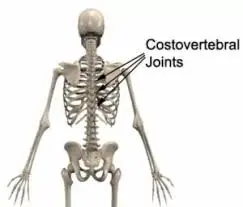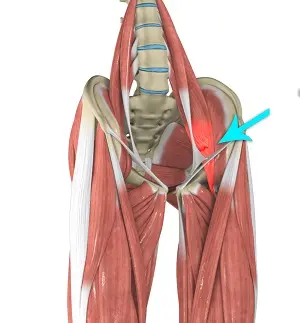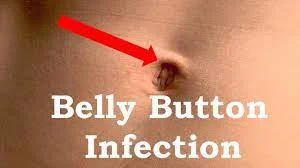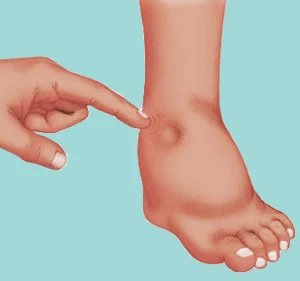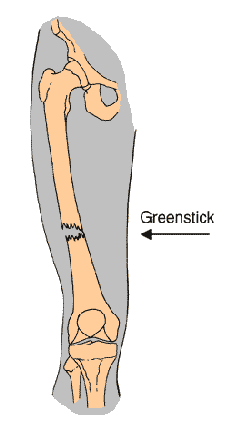Costovertebral Dysfunction
Introduction:
Costovertebral dysfunction refers to pain or restricted mobility originating from the costovertebral joints, where the ribs meet the thoracic spine. This condition often results from joint stiffness, poor posture, trauma, or repetitive strain, leading to localized back or chest pain, sometimes mimicking cardiac or visceral issues. Proper assessment is essential for accurate diagnosis and effective management.
What is Costovertebral Dysfunction?
The costovertebral joints, which are where the ribs attach to the spine, can become irritated or dislocation in cases of costovertebral dysfunction. The thoracic spine and its surrounding regions may experience pain, stiffness, and limited mobility as a result.
Causes of Costovertebral Dysfunction:
Unusual pressure on the thoracic spine and ribs can result from poor posture, particularly slouching or extended forward head positions, which can aggravate or stiffen joints. Over time, these joints may also get strained by repetitive motions that require twisting, lifting, or reaching.
Additionally, recurrent microtrauma at the costovertebral joints can result from activities that include heavy breathing, sneezing, or coughing frequently, as in the case of respiratory infections. Aging-related degenerative changes, such as arthritis, can also weaken joints and make them more prone to malfunction.
Symptoms of Costovertebral Dysfunction:
Usually, intense, localized pain in the upper or mid-back, frequently under the shoulder blade or close to the spine, is a sign of costovertebral dysfunction. Deep breathing, coughing, sneezing, twisting, or specific thoracic movements may make this pain worse. Additionally, some people report feeling tight, stiff, or painful around the affected vertebra or rib.
It’s crucial to correctly discern between the two since, in certain situations, the pain may radiate throughout the chest wall or resemble the signs of other conditions, such as heart or lung problems. Other typical symptoms of this dysfunction include restricted rib movement and pain during deep breathing.
Risk Factors of Costovertebral Dysfunction:
- Bad Posture: Prolonged slouching or bad posture strains the ribs and thoracic spine.
- Trauma: Rib dysfunction may result from direct hits or traumas to the back or chest.
- Repetitive Motion: The costovertebral joints may be strained by activities that require a lot of twisting or bending.
- Overuse: Dysfunction may result from excessive use of the thoracic region’s muscles and joints, frequently caused by sports or work-related activities.
- Medical Conditions: The costovertebral joints may be impacted by inflammatory diseases such as arthritis.
Diagnosis:
Medical professionals search for distinctive symptoms, such as localized rib or back pain that gets worse when you cough, breathe deeply, or move in certain ways. Restricted rib or spinal motion may be seen during the physical examination, and the pain may be reproduced by palpating the costovertebral joints.
Joint stiffness or irritation can be detected with the use of specialized tests, such as segmental mobility evaluations or rib springing. Although they are not always required, imaging tests such as X-rays, MRIs, or CT scans can be performed to rule out infections, fractures, or other dangerous disorders if symptoms are severe or persistent.
To differentiate costovertebral dysfunction from other causes of chest or back pain, such as cardiac or pulmonary problems, a proper clinical evaluation is necessary.
Treatment of Costovertebral Dysfunction:
Pain management, joint mobility restoration, and addressing underlying reasons are usually the main goals of treatment for costovertebral dysfunction. Movement can be improved, and the affected rib and vertebrae realigned with the use of manual therapy techniques, such as joint mobilization or manipulation by a chiropractor or physical therapist.
To ease muscle tension and stop recurrence, posture correction, stretching exercises, and soft tissue therapy are crucial. Therapeutic exercises that focus on the shoulder, core, and thoracic spine muscles help to improve general function and stabilize the region.
In certain situations, pain and inflammation may be reduced by using techniques like heat therapy, ultrasound, or electrotherapy. To promote long-term healing and avert further episodes, it is also essential to teach the patient about appropriate ergonomics and activity adjustment.
- Physical therapy: Our physical therapists develop personalized workout plans to address muscular imbalances, increase strength, and improve flexibility. Pain is lessened and mobility is restored with the use of methods like manual therapy, stretching, and targeted strengthening exercises.
- Chiropractic Care: The costovertebral joints are realigned using spinal manipulations and adjustments in chiropractic therapy. To ensure that the thoracic spine operates at its best, our chiropractors use gentle approaches to treat pain, lower inflammation, and enhance overall spinal health.
- Osteopathy:
musculoskeletal problems with hands-on methods, concentrating on the structure and function of the body. To increase circulation, ease tension, and promote healing in the affected joints, our osteopaths use a combination of massage, stretching, and mild manipulation. - Acupuncture: Thin needles are inserted into particular body sites during acupuncture, a traditional Chinese medical procedure, to ease pain and lower inflammation. The pain caused by the costovertebral junction may be especially well-managed with this treatment.
- Deep Tissue Massage
To treat the particular regions impacted by costovertebral dysfunction, our therapists uses precise procedures. - Sports and Exercise Medicine
To aid in your recuperation and general well-being, our sports and exercise medicine specialists provide customized workout plans and lifestyle guidance. These exercises are intended to fortify the thoracic spine’s supporting muscles and stop further dysfunctional episodes. - Postural Education and Training
Our therapists offer helpful advice for implementing ergonomic principles into your daily routine as well as instruction on how to maintain proper posture while doing regular tasks. - Ergonomic Assessment
An ergonomic evaluation looks at your home and workplace settings to find out what causes rib dysfunction and bad posture. To promote improved spinal health and lessen tension on the thoracic region, our specialists advise making changes to your setup and routines. - Myofascial Release
A manual method called myofascial release works on the fascia, which is the connective tissue that surrounds muscles. Our therapists promote general musculoskeletal health by using light, continuous pressure to the affected areas to relieve stress and increase flexibility.
Prevention of costovertebral dysfunction:
Maintaining proper posture is essential for preventing costovertebral dysfunction, particularly while engaging in activities that call for extended standing, sitting, or computer use. The rib joints are supported, and general spinal health is enhanced by regular stretching and strengthening activities for the thoracic spine, shoulders, and core muscles.
Avoiding repetitive twisting or overloading motions that put strain on the upper back is crucial, as is using safe lifting procedures. The risk can also be decreased by including regular exercise, keeping a healthy weight, and taking quick care of any respiratory issues. The risk of developing costovertebral dysfunction can also be considerably reduced by making ergonomic changes to workstations and forming routines like taking regular movement breaks while performing sedentary duties.
Prognosis:
When costovertebral dysfunction is identified early and treated properly, the prognosis is usually excellent. The majority of people find that conservative treatments like manual therapy, exercise, and posture modifications significantly reduce their symptoms.
Although chronic cases may take longer, recovery usually happens in a few weeks, depending on the severity and existence of the underlying condition. Recurrence can frequently be reduced with appropriate rehabilitation and attention to prevention measures.
If treatment is not received, the dysfunction may result in compensatory movement patterns, decreased mobility, and chronic pain that may spread to other parts of the spine and ribs.
Complications:
A person’s quality of life may be impacted by several issues that might arise from untreated costovertebral dysfunction. Breathing efficiency and everyday activities may be hampered by the development of chronic pain and stiffness that limit the movement of the rib cage and thoracic spine.
Compensatory movement patterns caused by chronic dysfunction can result in secondary problems such as postural irregularities, muscle imbalances, and greater tension on the neck, shoulders, and lower back. In certain instances, chronic joint inflammation may eventually lead to degenerative changes or joint instability.
Furthermore, persistent pain and breathing difficulties can result in decreased physical fitness, increased exhaustion, and, in extreme situations, anxiety associated with chest pain that can be mistaken for more serious disorders like heart problems.
Conclusion:
Although costovertebral dysfunction can have a major negative influence on your quality of life, it is possible to find relief and return to normal function with the correct treatment strategy.
The joints between the ribs and the spine are impacted by costovertebral dysfunction, a treatable condition that frequently causes localized pain, stiffness, and difficulty breathing or moving. Most people can fully recover and resume their regular activities without any long-term problems if they receive early detection, the right care, and preventative measures.
Effective therapy and recurrence prevention depend on addressing underlying risk factors such as bad posture, weak core muscles, and repeated strain. People can regain joint function, reduce pain, and preserve the long-term health of their thoracic spine by combining manual treatment, exercise, and lifestyle changes.
FAQs
T5 costovertebral dysfunction: what is it?
his condition is known as T5 Costovertebral Dysfunction. Simply put, this refers to improper loading of the joint between the ribs and the thoracic spine, which is the central part of the upper back.
Why do ribs dysfunction?
The following factors may contribute to the condition: chest injury sustained while participating in contact sports including rugby, football, ice hockey, and wrestling. pitching a baseball or swimming are examples of quick twisting, pushing, or lifting motions.
What is the sign of costovertebral pain?
The spine and the 12th rib combine to produce the CVA. The abdominal exam includes a test for CVA soreness, which frequently signifies renal pathology.
How is costovertebral joint dysfunction exercised?
Push the rib joints forward with your shoulder blade as you lean forward. To mobilize the costovertebral joints, gently oscillate back and forth.
Costovertebral dysfunction: what causes it?
Repetitive Motion: The costovertebral joints may be strained by activities that require a lot of twisting or bending. Overuse: Dysfunction may result from excessive use of the thoracic region’s muscles and joints, frequently caused by sports or work-related activities.
What is the healing period for a costovertebral sprain?
It usually takes two to three weeks for individuals to recover from an accident with the best care and rehabilitation. However, it should be noted that under optimal healing conditions, wounded tissue takes around six weeks to regain most of its strength.
How may pain in the costovertebral joints be relieved?
Activity modification, the use of anti-inflammatory drugs, electrotherapy, costovertebral joint mobilization, or stretches are some possible therapeutic options.
Refrences
- Loulid, K. (2024, November 7). Understanding costovertebral dysfunction: causes, symptoms, and effective treatments | Freedom Clinics. Freedom Clinics. https://freedomclinics.com/understanding-costovertebral-dysfunction-causes-symptoms-and-effectivetreatments/#:~:text=Costovertebral%20dysfunction%20involves%20the%20irritation,thoracic%20spine%20and%20surrounding%20areas.
- Physiotherapy, V. (2023, March 8). Costovertebral joint Sprain/Disorder. Vitalis Physiotherapy. https://vitalisphysiotherapy.com.au/costovertebral-joint-sprain-disorder/
- Physical therapy news – Say Goodbye to rib pain: Effective Exercises for Costovertebral joint issues. (n.d.). https://www.vulcanmovement.com/articles/effective-exercises-for-costovertebral-joint-issues
- Song, D. (2023, June 25). Costovertebral Joint Dysfunction — Rehab hero. Rehab Hero. https://www.rehabhero.ca/blog/costovertebral-joint-dysfunction

